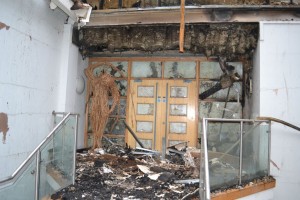Recently added item(s)
You have no items in your basket.

In our previous blog posts on passive fire protection we covered the importance of fire doors and fire door furniture in passive fire protection and saving lives. However, passive fire safety is about much more than just fire doors, as to ensure that rooms are effectively compartmentalized and will provide a period of protection from smoke and flames, other passive fire protection measures must also be in place for the following:
• Walls and partitions
• Suspended ceilings
• Ductwork
• Air transfer grills
• Glazing
• Shutters
• Firefighting shafts
If control measures are in place for each of these and they are routinely and regularly inspected and maintained (this is the responsibility of the building’s Responsible Person) this should mean that:
• The building’s structure is protected by minimizing the fire spread
• The premises can be compartmentalised into fire/smoke tight areas
• The means of escape is protected for the building’s occupants
• Fire fighters have the facilities they need to tackle the blaze effectively
• Areas of financial/strategic value such as an IT server room or a safe are protected
• Areas of high fire risk can be surrounded (as may be required by an insurance policy)
• The potential for external fire spread can be limited.
According to the Fire Protection Association, unprotected vertical and horizontal openings around pipework and ducts, etc are one of the major contributing causes of the rapid spread of smoke and fire in a building. These openings allow the smoke to spread beyond the room with the fire and into other rooms or floors of the building.
Fire stopping products such as fire collars, putties and fire sealants supplied by companies like Ventro and Quelfire can potentially make the difference between a fire spreading, and a fire stopping. Fire dampers and smoke dampers can also be used in heating, ventilation and air conditioning systems to prevent the spread of fire or smoke inside the ductwork.
However, any passive fire protection is only as good as its weakest point so if the protection has been incorrectly installed by a tradesman or damage has been done by a subsequent tradesman who doesn’t make good and restore the seal, the protection simply won’t be effective if a fire breaks out. Therefore, routine and regular inspection and maintenance isn’t just important, it’s potentially lifesaving!
Life is precious and property and assets matter. For help and advice on all fire protection and safety products, please contact the Fire Depot team on 0330 999 2233, email us at sales@firedepot.co.uk or visit www.firedepot.co.uk to see our range of fire safety products.